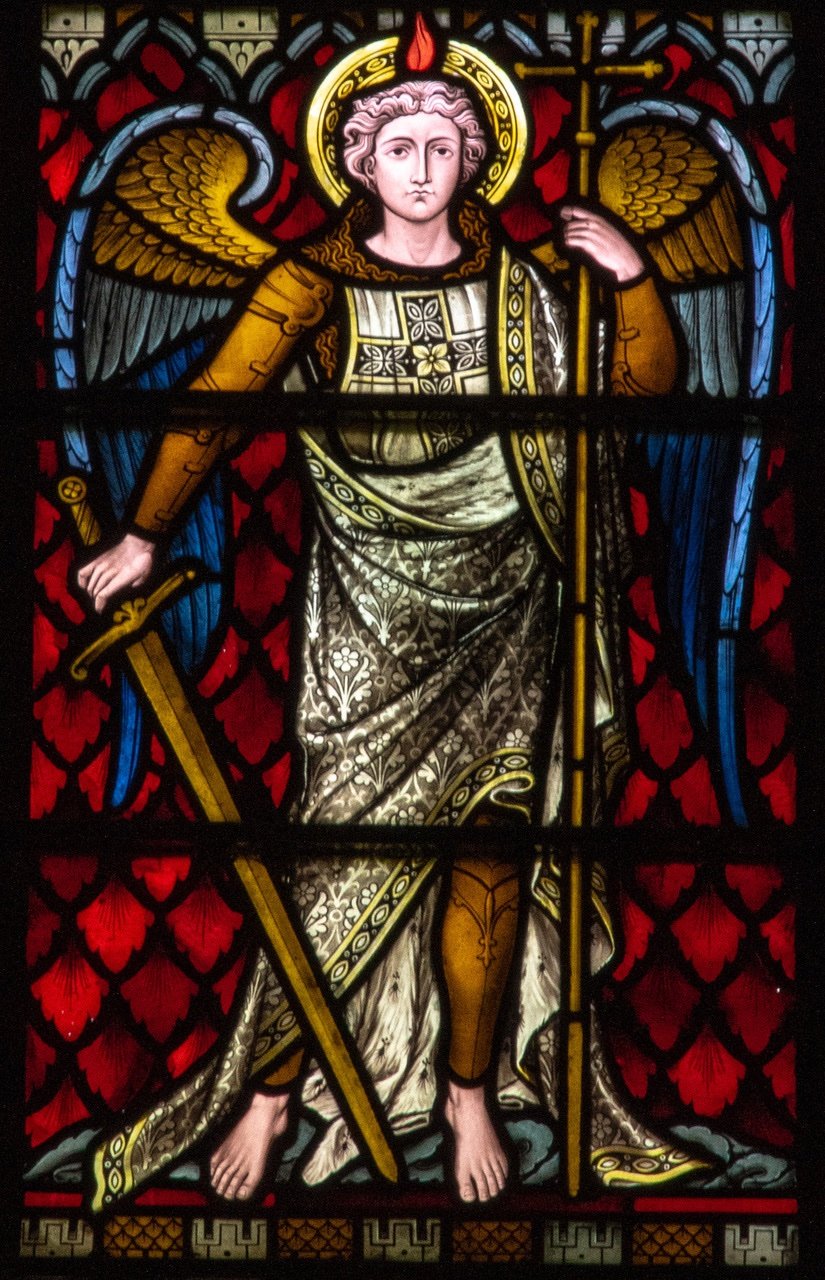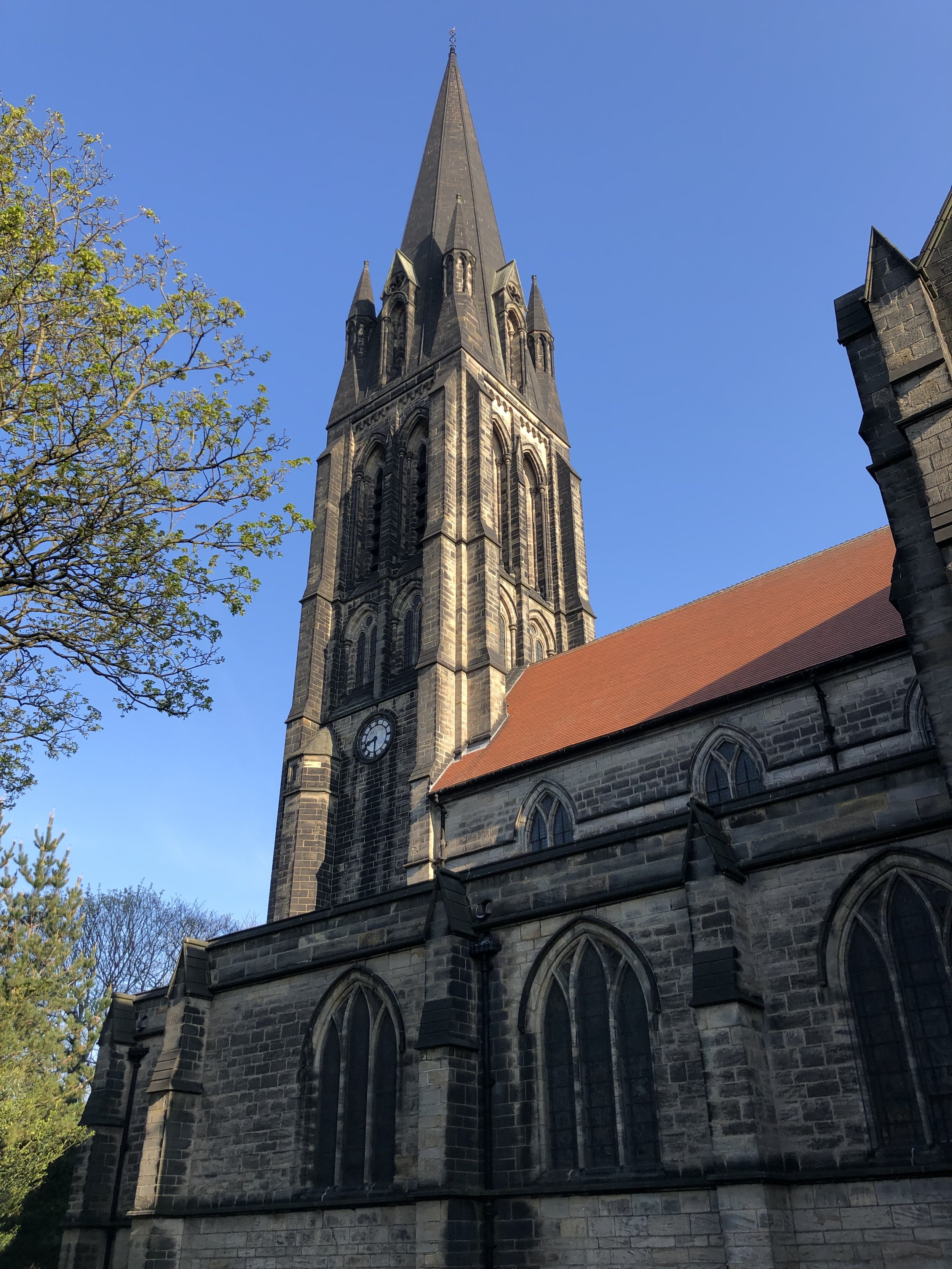
More History
The name 'Headingleia' appears in the Domesday Book (1086) and probably meansa 'clearing in the woods made by Headda' s men'. The chances are that Headda was a Dane or Saxon living eleven or twelve centuries ago.
The parish of Headingley is now one of many Anglican parishes in Leeds, but in the Middle Ages Headingley was a small village in the large parish of Leeds. The main place of worship was St Peter's Church in Leeds (also mentioned in the Domesday Book), which is still called the 'Parish Church' by Leeds people. As the population increased, people moved further from the town and small settlements grew. The parish church became inconveniently distant, and too small to hold all those in the parish and so little churches were built to serve these communities. They were technically known as Chapels of Ease. 'Chapels' because they were not parish churches and 'of ease' because they were meant to relieve the overcrowding of the mother church. St Michael’s was originally one of these, and the old title is still preserved in the name of 'Chapel Lane' nearby.
In 1626 Leeds, famous for its cloth market, acquired a charter giving it certain privileges such as the right to have a corporation of local worthies to govern the
town. A West Riding landowner with contacts at Court, Sir John Savile, helped the Leeds merchants to gain this charter and it was he who gave land in Headingley for a 'new chapel' to be built. This, the first church on this site, was built by a local man, James Cotes, who later also gave some money to endow the church which was licensed in 1627. It was small, built to hold 200 people (which was roughly the population of Headingley in the 17th century) and lasted for 210 years.
Not much remains of this church, but there is a brass plate in the centre aisle of the current building remembering John Smithson who was Curate of Headingley (as yet there was no Vicar) for 54 years in 1782-1836, and his wife Ruth. There are also three memorial tablets in the vestries dating from this building and the church has some silver Communion Plate given by Walter Wade, a Mayor of Leeds who lived at New Grange (now called Beckett Park) in 1756.
By 1830 the population of Headingley had grown to more than 2000. William Williamson, who was appointed Curate in 1836, decided to build a bigger church, with seating for 600. The cost of erecting the church was £2 582; much of this raised by allotting seats in the new church at the rate of £10 a seat. 130 seats were set aside as ‘free and unappropriated’, but these were not attractively placed. This new church was consecrated in 1838.
Mr Williamson became the first Vicar in 1849 when a reorganisation of the church in Leeds saw Headingley become a parish in its own right. He was a very energetic man! He organised a Parish Lending Library (free for Sunday School teachers), and arranged for the rebuilding of the Day School close to the Church. This is the building that became the Parish Hall in 1980 when St Michael’s School moved to new premises.
However by 1870 it was obvious that an even larger church was needed, even though several new churches such as St Chad’s in Far Headingley, St Augustine’s at Hyde Park and St Matthias in Burley had recently been built in the area. It was suggested that a small mission church could be built elsewhere in the parish, or else that two services could be held on Sunday mornings (one for the artisans at 10am, and the other for the upper classes at 11.30!). Finally it was decided that the best plan was to build a new church.
In 1881 the Vicar Henry Tuckwell died and Frederick J Wood was appointed in his place. He soon became involved in plans for the new church. By March 1882 J L Pearson (the architect who also designed Truro Cathedral) had been appointed and the present church, the third on the site, designed in the Early English style. There were still difficulties to be overcome, in particular that if a new and larger church was to be built, part of the churchyard, with its graves, might be disturbed.
A vocal minority still opposed the idea with meetings and strongly worded pamphlets, claiming: that two-thirds of the people of Headingley were non-conformists and so further Anglican provision was unnecessary; that the opening of the graves to re-inter the bodies would lead to the spread of disease; that the Vicar was planning to sell exhumed corpses at a profit; and that the plans for a large chancel suggested Popery. However, the majority of the parishioners were in favour of the new Vicar and his plans, and the objectors finally withdrew in November 1883.
The memorial stone of the new building was laid on Michaelmas Day in 1884 and the new church consecrated on 8th July 1886, the porch and spire being completed by 1890. The Bishop of Ripon completed the spire by lowering into place the topmost stone with the weathercock by means of a rope reaching down to the ground. In all £25 000 was raised to pay for this building. Some of the windows were transferred from the earlier church and others were specially designed for this one by John H Powell, the work being carried out by John Hardman & Co of Birmingham.
Amongst the many men and women who have given generously of their time and money to St Michael’s over the years, the name of Charles Francis Tetley is outstanding. He was head of the local firm of brewers, a member of the City Council and an ex Lord Mayor, much involved with the musical life of Leeds and the University. He was churchwarden of St Michael’s for over fifty years from 1881 until his death. Amongst his many gifts to the church were the organ installed in the new church by Abbott and Smith of Leeds (the case was later given by his wife); the sum of £1000 in 1921 to start a Fabric Fund; and the extension of the Vestries in 1932. After his death in 1934 his fellow warden, J E Kitchen, another generous benefactor, presented the churchwardens’ staves as a memorial to him.
In 1986 to celebrate the centenary of the church, an appeal raised £50 000 to provide a ‘gift which would benefit the community and the church’. The community gift was the building of a Youth Centre in the grounds of the Parish Hall, whilst in the church the organ was thoroughly overhauled and the heating converted to gas.
As the 20th century came to a close it was becoming apparent that the roof tiles were reaching the end of their lives and, in order to preserve the church for future generations, the whole roof would need to be retiled. An appeal for £100 000 was launched in 1998 and between November 2000 and April 2001 the work was carried out. The new tiles are identical in colour to the original (Rosemary) and indeed were made by the same firm that supplied the originals. With modern manufacturing techniques, however, these should last at least 150 years. The final phase of the roof repairs to the flat South Aisle roof was completed in September 2001. The bright new roof, visible in the television cricket coverage from the nearby Yorkshire County Ground, will stand as a symbol of God’s place in the centre of Headingley for generations to come.



